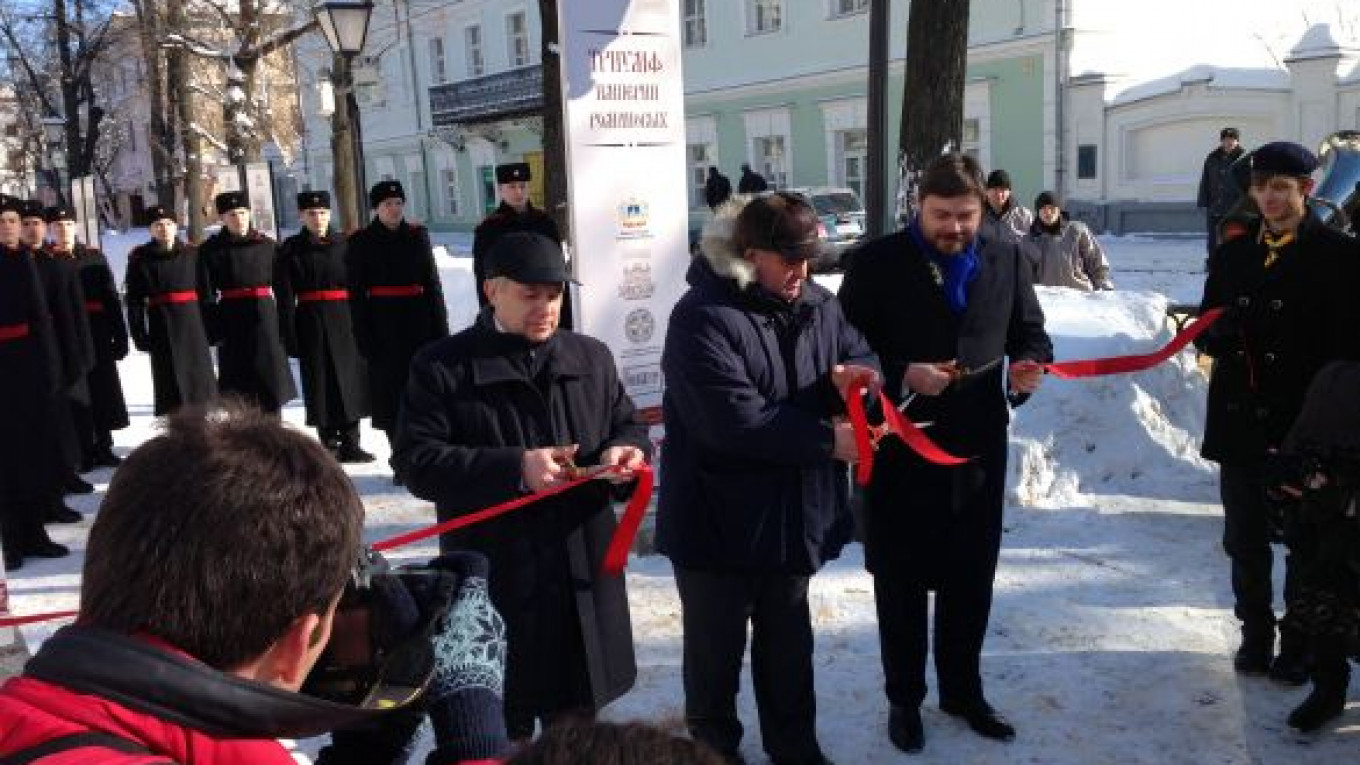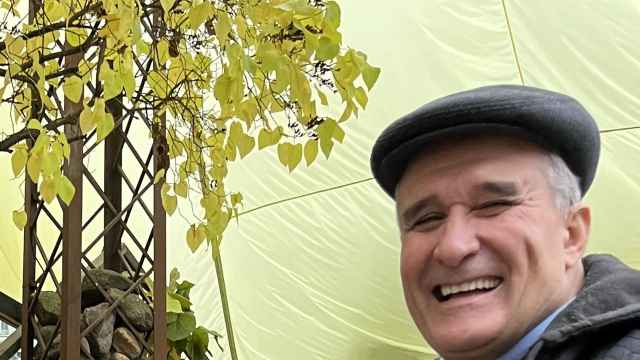KOSTROMA — Russia’s last royal dynasty was honored Saturday in the ancient city of Kostroma in northern Russia. The first Romanov tsar was elected in this city in 1613, the year that put an end to the Time of Troubles in medieval Russia.
The enthronement of tsar Mikhail Fyodorovich Romanov took place at the city’s Ipatiyevsky Monastery. His dynasty lasted just over 300 years, until 1917, the Bolsheviks executed Russia’s last ruling monarch, Nicholas II, and his immediate family.
Various members of the Romanov family fled communist Russia, and their descendants survived to mark the 400 years of the Romanov dynasty.
Scouts and Orthodox cadets in pre-revolutionary parade uniforms lined the street across from the nearby Romanov Museum.
Present were State Duma deputy Yury Shuvalov, member of the United Russia party, Kostroma regional governor Sergei Sitnikov and Romanov anniversary organization chairman and St. Basil the Great charity founder Konstantin Malofeyev.
Until recently, Malofeyev was one of the biggest shareholders of Rostelecom.
The dignitaries greeted the guests and cut the ceremonial red ribbon opening the “Triumph of the Romanov Empire” exhibition, part of the yearlong Romanov anniversary celebration.
People from all over the country gathered at Kostroma’s Nobility Assembly Hall, an 18th-century building, to celebrate the Romanov Anniversary and hear lectures by historians and researchers dedicated to the study of the Romanov dynasty.
“The Romanovs’ role was a great one. In Kostroma, they undertook a historic mission to build a new state,” Leonid Reshetnikov, head of the All-Russian Institute of Strategic Assessments, said during a round-table on the Romanovs’ exhibition.
The “Triumph of the Romanov Empire” exhibit inside the museum showcases the diaries of the Grand Duchess Ksenia Alexandrovna, sister of Nicholas II, who fled revolution-torn Russia in 1919.
The diaries present a unique historical witness to the war, revolution and emigration through the eyes of a member of the royal family.
“This is wonderful that the grand duchess’ diaries, which she started writing in Russia before she emigrated, have returned 50 years after her death, and now for the first time are presented to the general public,” historian Nikolai Bokhanov told reporters at the exhibition.
The pages of the diaries are framed in plastic cases so viewers can hold them and read while watching the exhibition.
The outdoor part of the exhibition features posters and photos of great national accomplishments under the Romanov rule in the fields of industrial development, education, economics, social rights, labor laws, government and the military.
One of the posters states that in 1914, Russia had 105 universities and 127,000 students, which was by far greater than any other European country (Germany had 79,600 students; Austria-Hungary, 42,400; France, 42,000). By 1916, the number of university students in Russia had grown to 135,842.
“Over the 20-year period from 1894 to 1914, the Russian population increased 50 percent to over 180 million,” said Prince Zurab Chavchavadze, head of the St. Basil the Great charity foundation and a descendant of Georgian nobility. He was guiding the guests through the outdoor exhibition.
The Romanov Museum also now displays an exhibition of artworks by renowned artist Ivan Glazunov, son of another prominent Russian painter, Ilya Glazunov, a dedicated monarchist.
His paintings mostly depict local girls in colorful, traditional costumes from the Romanov era and landscapes of the Russian north. Glazunov also brought a collection of peasants’ costumes and household items to re-create an old atmosphere in the gallery.
“All of this ancient heritage along with songs, poetry and wooden architecture is like a dream for us. It inspires me and lives in my works,” Glazunov said.
Toward the evening, a concert of chamber music was held at the city’s State Philharmonic. “Music of the Romanovs” featured a choral ensemble, Sirin, which performed some rare Orthodox chants and spiritual songs from the 17th and 18th centuries.
The second part of the program was dedicated to secular 19th-century vocal romances and music by Pyotr Tchaikovsky, Sergei Rachmaninoff and Modest Mussorgsky, all performed by noted Moscow opera singers and a piano virtuoso.
The "Triumph of the Romanov Empire" exhibition will be on display in Kostroma until April 3.
Contact the author at artsreporter@imedia.ru
A Message from The Moscow Times:
Dear readers,
We are facing unprecedented challenges. Russia's Prosecutor General's Office has designated The Moscow Times as an "undesirable" organization, criminalizing our work and putting our staff at risk of prosecution. This follows our earlier unjust labeling as a "foreign agent."
These actions are direct attempts to silence independent journalism in Russia. The authorities claim our work "discredits the decisions of the Russian leadership." We see things differently: we strive to provide accurate, unbiased reporting on Russia.
We, the journalists of The Moscow Times, refuse to be silenced. But to continue our work, we need your help.
Your support, no matter how small, makes a world of difference. If you can, please support us monthly starting from just $2. It's quick to set up, and every contribution makes a significant impact.
By supporting The Moscow Times, you're defending open, independent journalism in the face of repression. Thank you for standing with us.
Remind me later.






